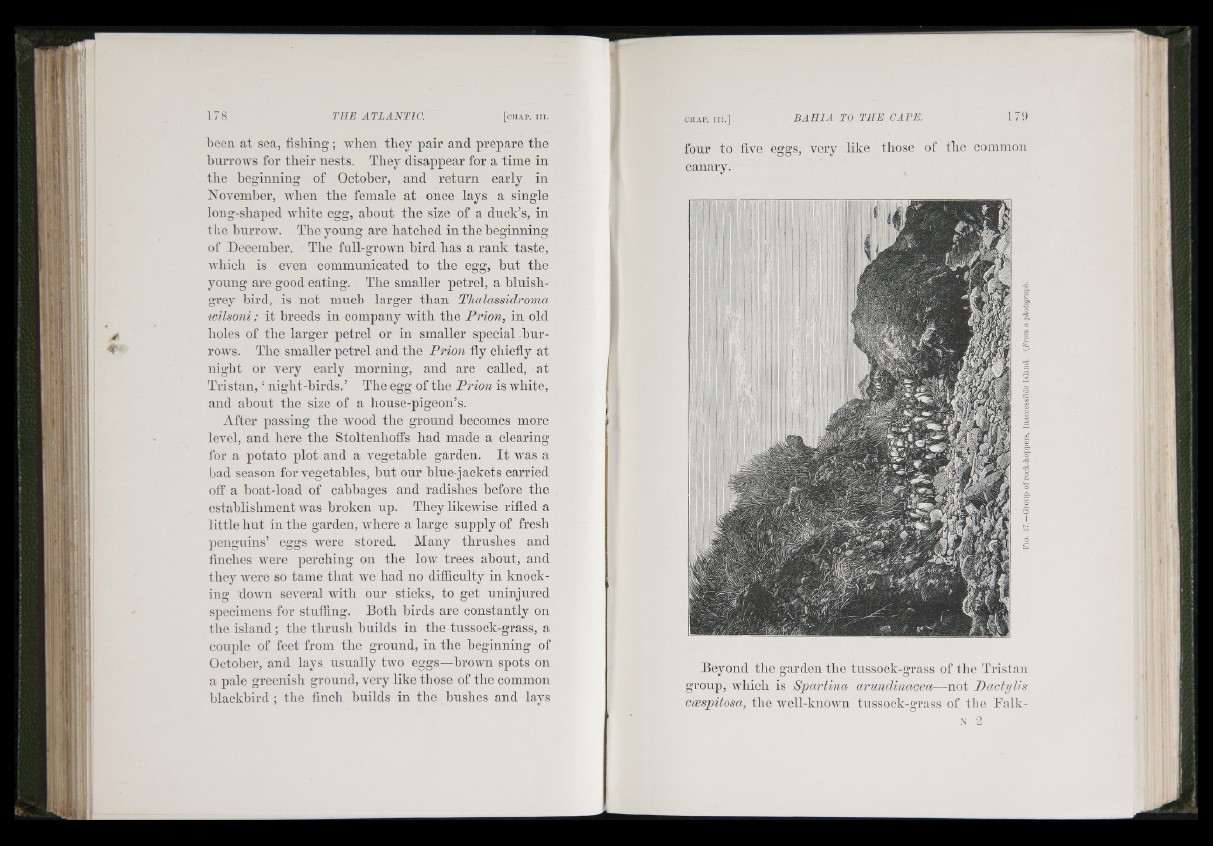
179
A'
been at sea, tisb in g ; AA'lien they ]3air and prepare tlie
burroAA's for tlieir nests. They disajAjiear for a time in
the beginning of October, and retu rn early in
NoA'ember, Aidieii the female at once lays a single
long-sliaped AAdiite egg, about tlie size of a duck’s, in
the biirroAA'. The young are liatclied in the beginning
of December. The fiill-groAAm bird lias a rank taste,
Avbicli is CA'en communicated to tlie egg, b u t the
young are good eating. The smaller petrel, a bluish-
grey hird, is not much larger than Thalassidronia
■ioilsoni; it breeds iu company Avith the Prion, in old
holes of the larger petrel or in smaller special biir-
roAA's. The smaller joetrel and the Prion fly chiefly at
night or A'ery early morning, and are called, at
Tristan, ‘ night-birds.’ The egg of the Prion is AA'hite,
and ahout the size of a hoiise-pigeon’s.
After passing the AA'ood the ground becomes more
IcA'el, and here the Stoltenhoffs had made a clearing
for a potato ]ilot and a A'egetahle garden. I t V'as a
l>ad season for A'egetahles, h u t our hlne-jackets carried
off a hoat-load of cabbages and radishes hefore the
establishment Avas broken up. They likcAvise rifled a
little hu t ill the garden, Avhere a large supply of fresh
jienguins’ eggs Avere stored. Many thrushes and
finches AA’ere ^^ei’ching on the I oav trees about, and
they Avere so tame th a t Ave had no difficulty in knocking
doAA’ii several Avith our sticks, to get uuinjiired
specimens for stuffing. Both hirds are constantly on
the island ; the thrush builds in the tussock-grass, a
couple of feet from the ground, in the heginning of
October, and lays usually tAvo eggs—hrovvn spots on
a pale greenish ground, very like those of the common
blackbird ; the finch builds in the bushes and lays
four to five eggs, very like those of the common
canary.
Beyond tlie garden the tussock-grass of tbe Tristan
group, Avliich is Spartina arimdinacea—not Pacli/Iis
ccesjnlosa, the Avell-knoAvn tussock-grass of tbe Talk